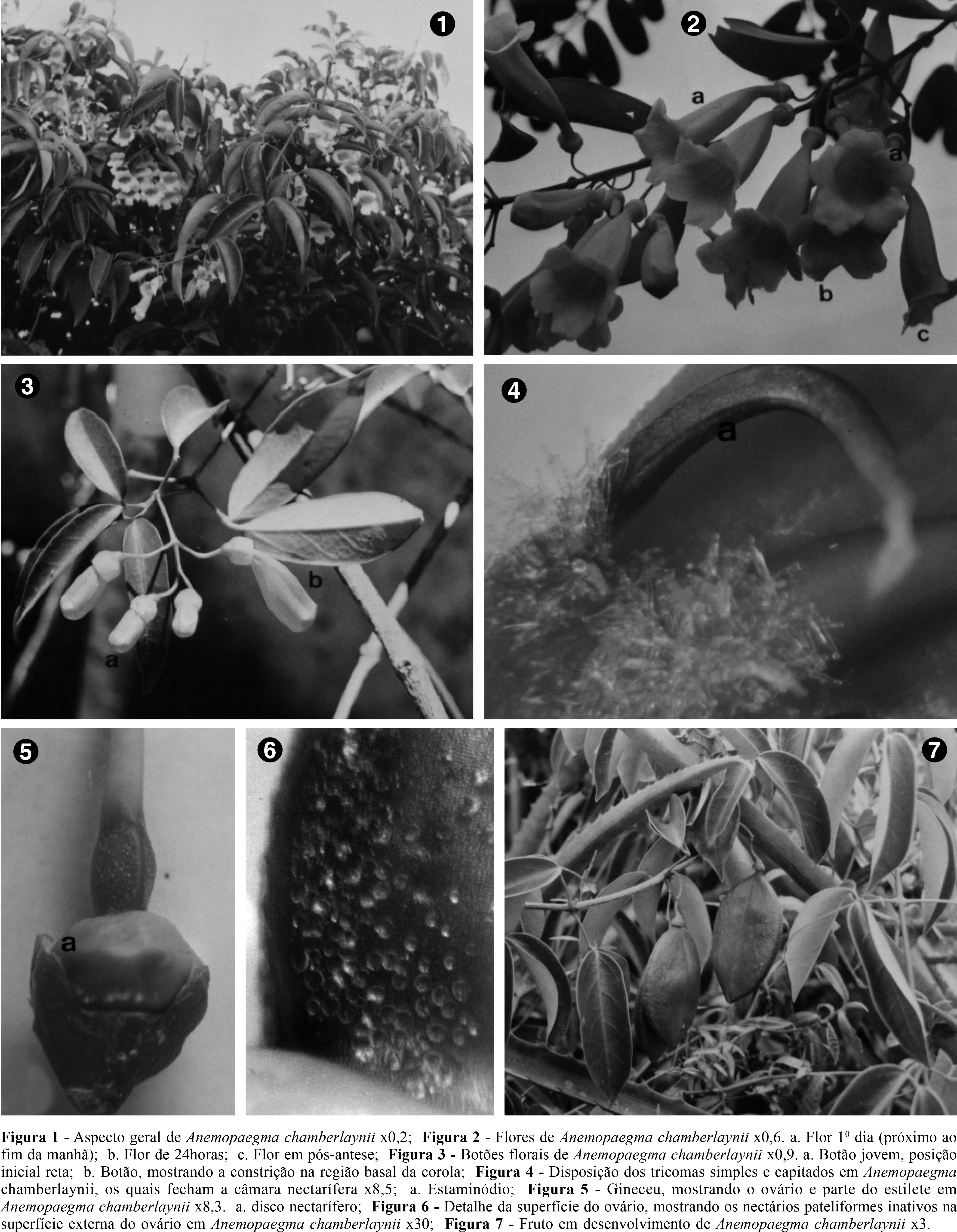Biologia floral e polinização de Anemopaegma chamberlaynii Bur. & K. Schum. (Bignoniaceae).
DOI:
https://doi.org/10.35699/2675-5327.2006.22183Palavras-chave:
Anemopaegma chamberlaynii,, floral biology, reproduction, restinga, phenologyResumo
The present work deals with the floral biology, reproductive system and phenological events of Anemopaegma chamberlaynii Bur. & K. Schum. (Bignoniaceae), in the coastal strand vegetation (restinga) of Maricá RJ., between 1997 and 2000. The flowers display daytime anthesis, are yellow, very attractive, tubulous, hermaphrodite, odoriferous and produce nectar as the floral reward. The nectar is secreted by a nectariferous disk and accumulated in a chamber. The stigmas are bifid, wet and papillous. The stigmatic lobes are receptive to pollen only on the inner surfaces and are sensitive to disturbance. If the stigma is touched but no pollen is deposited, the lobes close and soon reopen. The same occurs when self-pollen is deposited on the receptive surface. However, after manual pollination with cross-pollen the lobes close permanently, enabling to estimate levels of pollination by monitoring stigma closure. Euglossa cordata L., Epicharis dejeanii Lepeletier and E. semiflava Moure are potential pollinators. Xylocopa ordinaria Smith is the primary nectar robber. The species is self-incompatible and has a low fruit set (Fruit/Flower=4.86%). The flowering pattern is the “multiple bang”, showing five episodes per year, with the same intensity, all of them occurring in the most hot and rainy months.

Downloads
Publicado
Edição
Seção
Licença

Este trabalho está licenciado sob uma licença Creative Commons Attribution-NonCommercial 4.0 International License.
